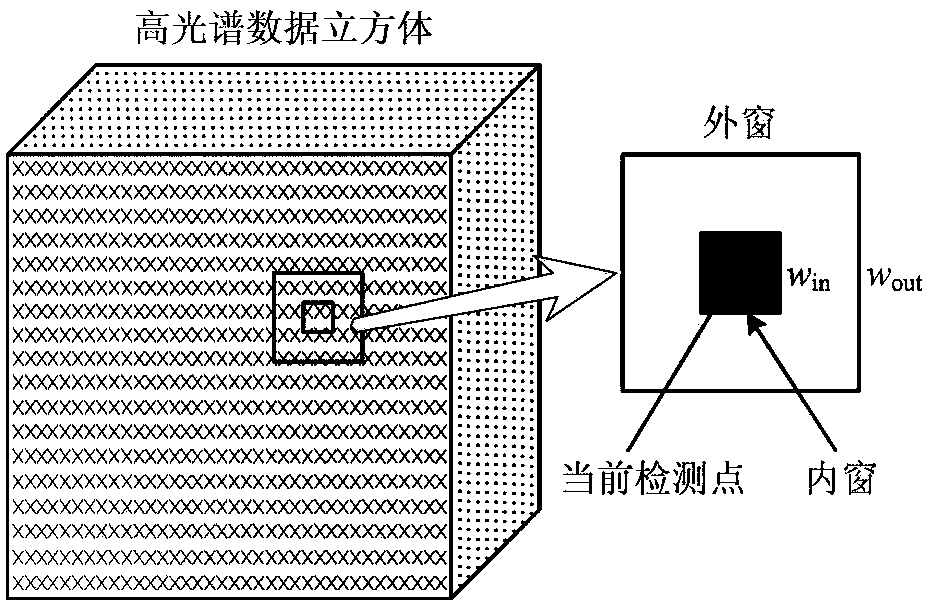Hyperspectral image abnormity detection method based on constrained sparse representation
A hyperspectral image and sparse representation technology, applied in image analysis, image enhancement, image data processing, etc., can solve problems such as the difficulty of determining the sparseness of sparse representation, the local background is polluted by target signals, etc., and achieve the effect of improving the reconstruction accuracy
- Summary
- Abstract
- Description
- Claims
- Application Information
AI Technical Summary
Problems solved by technology
Method used
Image
Examples
Embodiment Construction
[0055] Hereinafter, the present invention will be further described in conjunction with the drawings and embodiments.
[0056] Such as figure 1 Shown is a flowchart of the method of the present invention, a hyperspectral image abnormality detection method based on constrained sparse representation, which specifically includes the following steps:
[0057] The first step: linearly normalize the hyperspectral image.
[0058] According to the maximum and minimum normalization method, each pixel of the hyperspectral image is linearly normalized. According to the following formula, each pixel H of the hyperspectral image l,j,k Linear normalization to between 0 and 1:
[0059]
[0060] Step 2: For each test pixel, extract the local background dictionary according to the dual-window model. See reference 1 for details. Reference 1: S. Matteoli, M. Diani, and G. Corsini, "Atutorial overview of anomaly detection in hyperspectral images," IEEE Aerosp.Electron.Syst.Mag., vol. 25, no. 7, pp. 5–...
PUM
 Login to View More
Login to View More Abstract
Description
Claims
Application Information
 Login to View More
Login to View More - R&D
- Intellectual Property
- Life Sciences
- Materials
- Tech Scout
- Unparalleled Data Quality
- Higher Quality Content
- 60% Fewer Hallucinations
Browse by: Latest US Patents, China's latest patents, Technical Efficacy Thesaurus, Application Domain, Technology Topic, Popular Technical Reports.
© 2025 PatSnap. All rights reserved.Legal|Privacy policy|Modern Slavery Act Transparency Statement|Sitemap|About US| Contact US: help@patsnap.com



